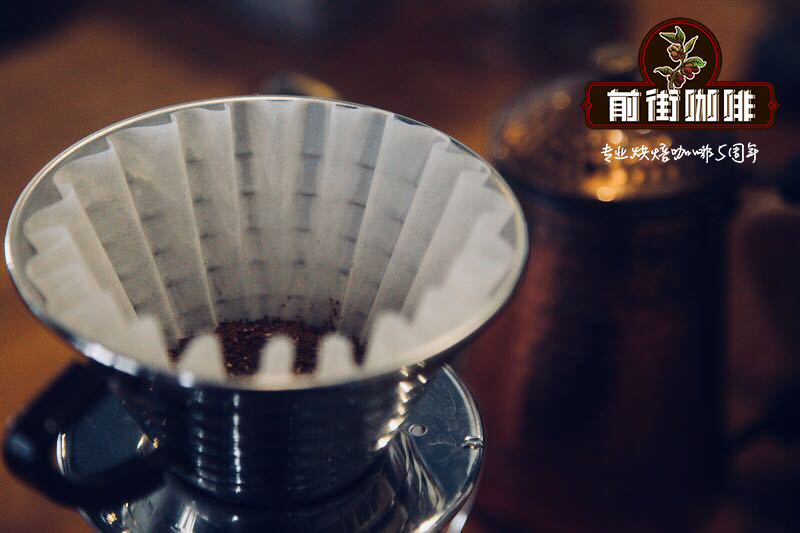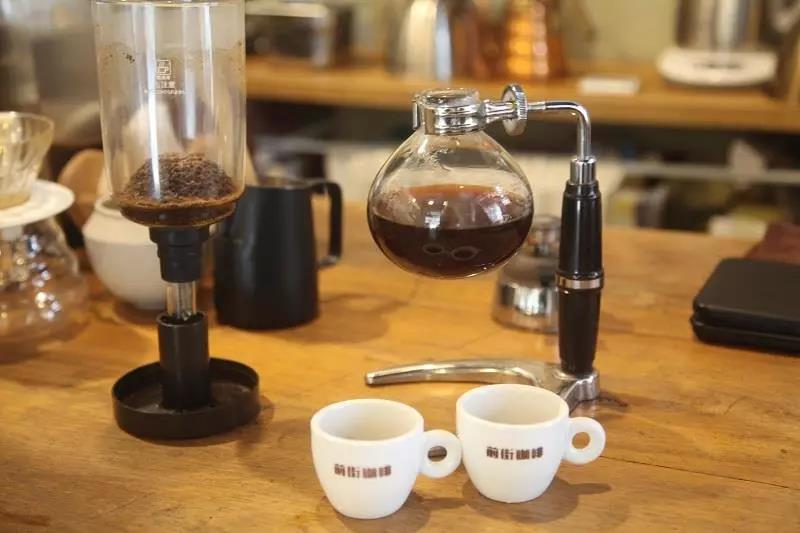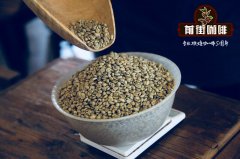How many types of coffee trees are there? Do you know coffee lovers?
How many kinds of coffee trees are there? As a coffee controller, do you know?

In plant taxonomy, coffee belongs to the Genus Coffea family of Rubiaceae, and there are at least a hundred varieties of coffee under it.
The more common types of coffee are Arabica (Arabica, elegant flavor, is the main boutique coffee) and Robusta (or thick beans, rough flavor, high caffeine content, not boutique coffee).
In addition to these two species, there are two small species, namely Liberica (tall trees, mainly grown in Malaysia and West Africa) and Excelsa;, but these two small species are very rare in the market (even the official Chinese translation is not found).
Arabica also has many subspecies, all derived from Ethiopia's oldest Tibika (Typica) and Yemen's Bourbon, which have been transplanted into Central and South America or Asia; they are numerous and numerous. But boutique coffee mainly refers to the carefully cultivated high-altitude Arabica, the variety is not too many. The rough classification is listed below.
Ancient native species:
Typica: the oldest native variety in Ethiopia, all Arabica are derived from Tibika. The top leaf of Tiebika is bronzed and the bean body is oval or thin in shape; the flavor is elegant, but the physique is weak, the disease resistance is poor and the fruit yield is less. Excellent manor beans such as the Blue Mountains of Jamaica, Mantenin of Sumatra, and Kona of Hawaii all belong to Tibica.
Bourbon: the early (prehistoric coffee) Tibica was transplanted to the variety behind the leaf, and the shape of the bean changed from thin and pointed to round. It was named bourbon in 1715 after France transplanted round beans from Yemenmoka to the island of Bourbon on the east coast of Africa (renamed Reunion after the French Revolution). Bourbon beans spread to Brazil and Central and South America in 1727, and the British transplanted Yemenmoka to St. Helena Island in 1732 (where Napoleon was later imprisoned).
The bronze color of the top leaf of Tibica is one of the features.
Gene mutant
Pointed Bourbon (Bourbon Pointu): found in Bourbon Island in 1810, beans changed from round to pointed, with only half the caffeine content, but in small amounts, weak and extremely precious (mostly cultivated in the laboratory).
Elephant bean (Maragogype, or Elephant Bean): Tibica's best-known variety of beans, first discovered in 1870 in the Maragogype bean-producing region of the state of Bahia in northeastern Brazil, is at least three times larger than the average Arabica, hence the name. The taste of elephant bean is poor in low altitude area, but it has better flavor at high altitude, mild sour taste and sweet fragrance.
Geisha (Geisha): a derivative of the Tibika family, it was exported from the Geisha Mountains in southern Ethiopia in 1931 (Geisha is synonymous with Japanese geisha). It was unknown in many countries and was transplanted to Panama in the 1960s before it began to win cup tests in 2005.
Kenya "SL28" and "SL34": the bourbon line screened and cultivated by French and British missionaries and researchers in Kenya at the beginning of the 20th century has adapted to Kenya's high-concentration phosphate soil for a hundred years, giving birth to the sour elves with Kenyan characteristics. Top Kenyan coffee comes from these two varieties, but it will lose its flavor when transplanted elsewhere.
Yellow bourbon (Bourbon Amarello, or Yellow Bourbon): a bourbon variety endemic to the Brazilian state of Sao Paulo, where the coffee fruit does not turn red and is orange when ripe. It was later found that the pericarp of other local bourbon-derived varieties also turned yellow.
Kaddura (Caturra): a single genetic variant of bourbon, discovered in Brazil in the 1950s. The production capacity and disease resistance are better than bourbon, and no shade tree is needed; the flavor is equal to or slightly worse than bourbon.
Pacas (Pacas): the bourbon variety found in El Salvador was transplanted into El Salvador coffee farmer Pacas in 1935. In 1956, it was found that the fruit yield was higher than that of other coffee trees of the same kind. Experts were asked to identify and confirm that there was a genetic mutation.
The bourbon variety, which was first discovered in Costa Rica in the Villa Sarchi:1960 era, has often appeared on the cup test list of excellence in recent years.
From left to right: Kenya beans, Elephant beans, Kenya AA
Arabica intraspecific hybridization (Intraspecific Hybrid)
New World (Mundo Novo): a natural cross between Bourbon and Sumatra Tibica, first found in Brazil. Because of its high yield and resistance to diseases and insect pests, it was widely planted in Brazil in the 1950s and was praised as the new hope of the Brazilian coffee industry, but the trees were tall and difficult to harvest.
Catuai: a hybrid of New World and Kaddura; short, wind-resistant, but monotonous.
Pacamara: the hybrid variety of Pacas (Pacas) and elephant bean (Maragogype). The size of the bean is second only to the elephant bean. It is an excellent variety produced in El Salvador in the 1950s. It has achieved good results in cup test in recent years.
Kent: the Tibica hybrid found in India has high yield and strong disease resistance, but has not achieved good results in the cup test.
Arabica hybridized with stout bean (Interspecific Hybrid)
Timor: a natural hybrid found in East Timor with 44 chromosomes, close to Arabica, but with a mediocre flavor.
Catimor: in 1959, the Portuguese mixed Brazilian Kaddura and Timo to develop a disease-resistant Cartimo. But the flavor is also poor, and it is an important variety of commercial beans at present.
Icatu: a Brazilian variety that has been improved for many generations and has been in the top ten of Brazil's Outstanding Cup.
Ruyilu 11 (Ruiru 11): a hybrid variety developed in Kenya in 1985 with heavy yield but less quality.
Arabica and sturdy beans hybrid varieties, so far, there is no boutique coffee, however, many even imported specialty coffee suppliers, some of this hybrid beans mixed with mixed beans (Blend) to reduce costs.
In addition, from the above gene mutants (whether natural or scientific research products), their flavor has a lot to do with specific regional conditions. Even in the same country, coffee beans produced by different estates can vary widely. For example, the Blue Mountain of Wallenford Manor, a national treasure of Jamaica, is more than twice as expensive as the super-high mountain Blue Mountain of Jamaica.
Important Notice :
前街咖啡 FrontStreet Coffee has moved to new addredd:
FrontStreet Coffee Address: 315,Donghua East Road,GuangZhou
Tel:020 38364473
- Prev

Siphon pot coffee brewing skills | introduction of siphon pot utensils that coffee fans need to know
Analytical immersion extraction! The simplest coffee brewing method, ── classic siphon pot immersion extraction, as the name implies, its principle is to let the coffee powder soak in a container, interact with hot water for a period of time, dissolve and spread to release the flavor and aroma of coffee smoothly, and complete the extraction before the miscellaneous flavor is precipitated.
- Next

The balance of bitterness and sourness in coffee roasting varies with the depth of roasting
Coffee Roasting The balance of bitterness and sourness changes with the depth of roasting. Understanding the characteristics of roasting Find your favorite coffee It is generally believed that green beans determine 80% of the taste of coffee, and the remaining 20% is determined by roasting. The most important thing is what kind of baking degree you bake. Beans Over-roasted coffee will only highlight bitterness; under-roasted coffee will become too sour. According to the characteristics of beans,
Related
- Detailed explanation of Jadeite planting Land in Panamanian Jadeite Manor introduction to the grading system of Jadeite competitive bidding, Red bid, Green bid and Rose Summer
- Story of Coffee planting in Brenka region of Costa Rica Stonehenge Manor anaerobic heavy honey treatment of flavor mouth
- What's on the barrel of Blue Mountain Coffee beans?
- Can American coffee also pull flowers? How to use hot American style to pull out a good-looking pattern?
- Can you make a cold extract with coffee beans? What is the right proportion for cold-extracted coffee formula?
- Indonesian PWN Gold Mandrine Coffee Origin Features Flavor How to Chong? Mandolin coffee is American.
- A brief introduction to the flavor characteristics of Brazilian yellow bourbon coffee beans
- What is the effect of different water quality on the flavor of cold-extracted coffee? What kind of water is best for brewing coffee?
- Why do you think of Rose Summer whenever you mention Panamanian coffee?
- Introduction to the characteristics of authentic blue mountain coffee bean producing areas? What is the CIB Coffee Authority in Jamaica?

